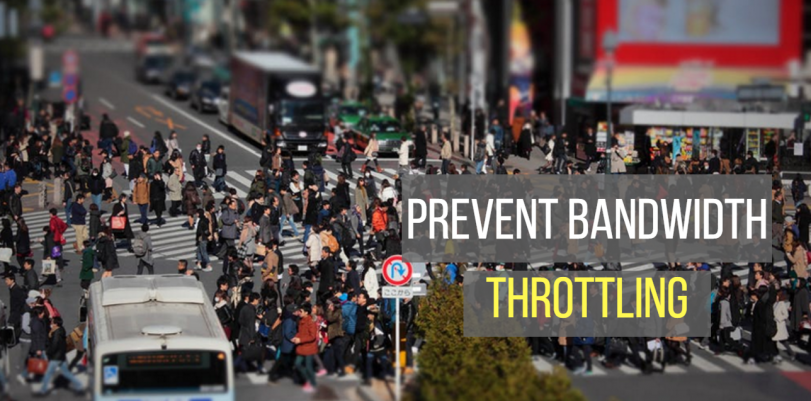The internet is supposed to be a place where you can do what you want when you want, other than malicious and nefarious jobs. Content should be available freely, and use of services should not be restricted for any reason other than dubious nature of the service. However, another issue that many people face today is bandwidth throttling.
What is Bandwidth Throttling?
In layman’s terms, intentionally reducing the speed of internet is referred to as bandwidth throttling. It is the practice of reducing the speed at which one is able to use the internet. This is done by your internet service provider or ISP. There are different reasons as to why ISPs do so.
To lower congestion at times when the traffic is high. ISPs have to process data whenever people use the internet. More people using the internet at certain times of the day means more processing of data. Therefore, ISPs often throttle bandwidth during peak usage hours.
Sometimes, ISPs throttle bandwidth for certain services. These services are usually related to entertainment, like Netflix or Torrents. Users who use these services regularly often find a reduction in speed after using it for some time. This is because such services use a lot of bandwidth, and to provide equal speeds to everyone, ISPs throttle the bandwidth.
It’s also the case at times that ISPs throttle the bandwidth after a certain threshold. This might be a threshold of number of users connected to the internet at any time. When the number of users crosses that threshold, the speed is reduced.
How can a VPN help?
As mentioned above, there are different reasons for ISPs to throttle the bandwidth of your connection. However, a one stop solution for this issue is to use a VPN.
VPNs encrypt your connection and hide your activity as well as the identity from anyone trying to snoop in. It makes you anonymous and provides for a secure channel for sharing sensitive information online. In this case, using a VPN can help you get past the issue of bandwidth throttling from your ISP.
This is because bandwidth throttling occurs when your ISP can see what you are doing. When you don’t use a VPN, your ISP can see that you have been using Netflix or downloading or uploading a torrent for many hours continuously. This might prompt them to throttle your bandwidth.
But when you use a VPN, all your ISP can see is that you are connected to a VPN. All your activity is hidden behind that. This means that you have a free pass to do what you want at the proper internet speed. VPNs like IPVanish are particularly good for this. This is because in addition to providing good encryption, they provide great connection speed.
Best VPNs for Bandwidth Throttling?
 |
 |
|
|---|---|---|
| Multi-platform Compatible | ||
| 256-AES Encryption | ||
| PRICE | $5 for 1 month with code "best10VPN" | $6.95 a month |
| Website Rating | 9.9 | 8.8 |
| 24/7 Live Chat | ||
| Residential / Dedicated IP for permanent streaming access | ||
| Has Mobile App + PC / Mac Support | ||
| Stealth VPN / Advanced Obfuscation techniques | ||
| Visit VPN Provider | Visit TorGuard | Visit PIA |
Conclusion
We talked in this article about bandwidth throttling. While we mentioned that bandwidth throttling is usually done by ISPs, it might be done at your work by the local admin. It might also be done by the target website you are using. In such cases, bandwidth throttling is an issue that cannot be tackled easily.
Using a VPN might not be allowed at your work place, so that isn’t an option there. However, if you want to get past bandwidth throttling from your ISP, then using a VPN is good enough. You can do what you want at the speed that you want.
